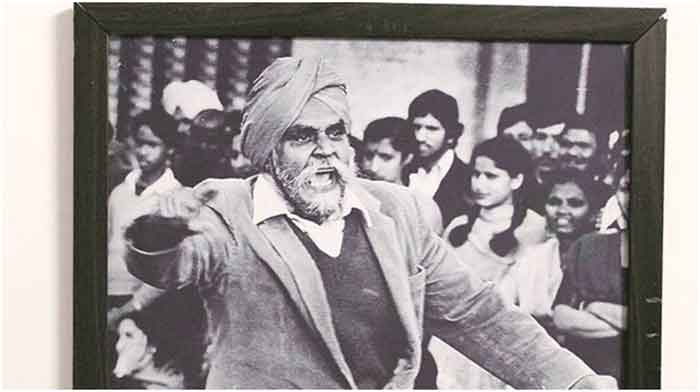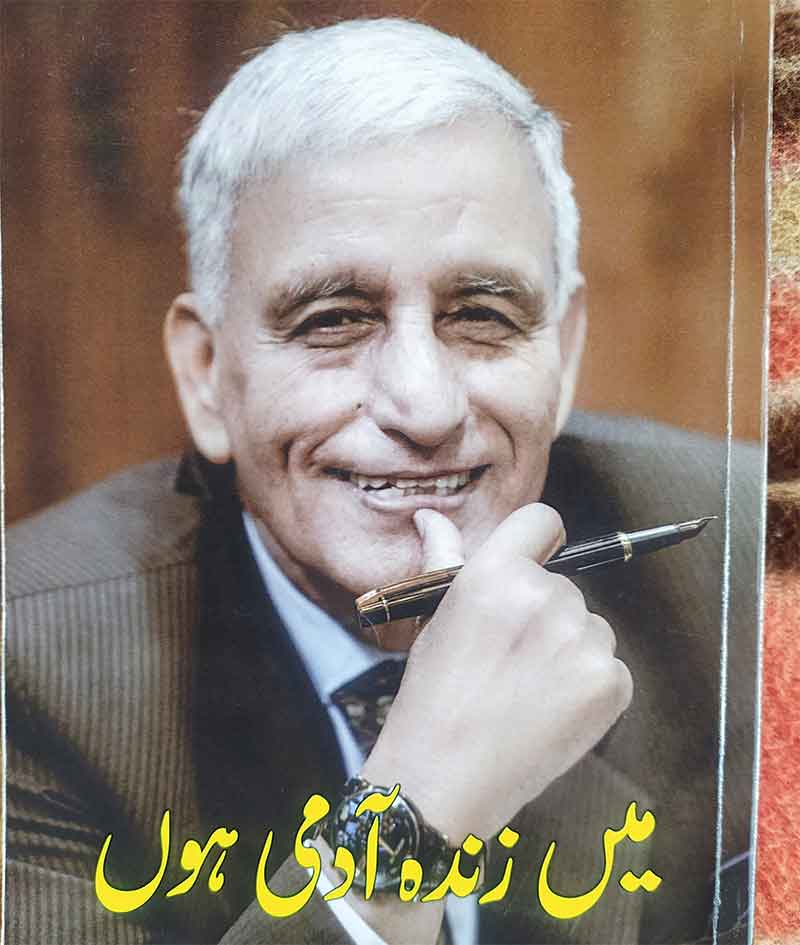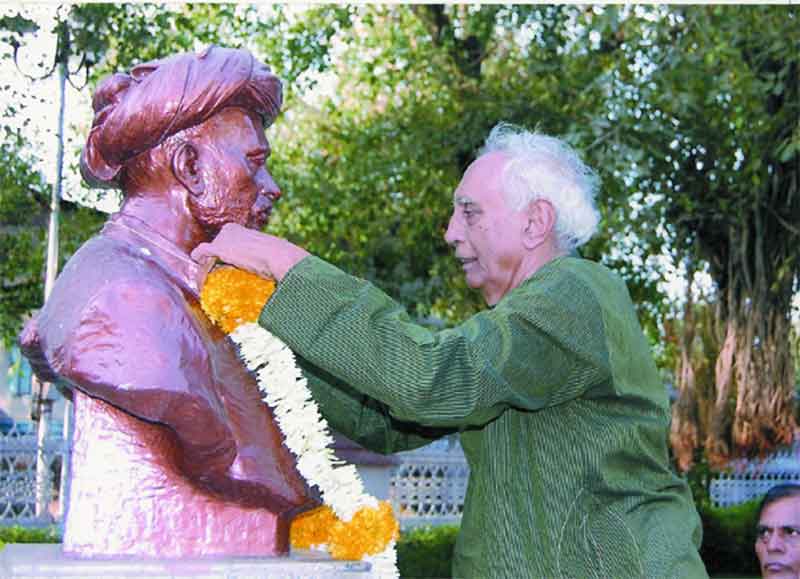
On 27th September we commemorated the 10th death anniversary of the late playwright Gursharan Singh.Punjab has never witnessed a revolutionary theatre activist who has penetrated the soul of the Punjabi masses in such depth Be it in the era of the Naxalbari uprising, the Emergency, the Khalistani movement or period of Globalization, he kept the flag of revolutionary resistance afloat even amidst the darkest waters .He was most innovative in formulating work in accordance with the very idioms of the people, devising new art forms.
His most progressive contribution was exposing the cruelties of the caste System, Religious communalism, semi-feudal oppression and discrimination of women. After witnessing his plays the common people’s anger was elevated to a boiling point against the social order, making them relate to their day to day problems at the very ground level..Gursharan Singh sowed the seeds for a major revolutionary theatre movement to encompass every region of Punjab, moulding many a theatre activist.Making the audience detached, played a key aspect in his plays. The memorial programme staged after his death would rank amongst the most ceremonious ever when paying homage to a revolutionary cultural activist.
His work drew many a rank of the youth into revolutionary cultural organizations, particularly in rural areas. Gursharan Singh opposed the imposition of ideology of Marxism-Leninism-Mao-Tse Tung thought within a Cultural organisation, but nevertheless held Socialist China in great esteem.
After his death his plays have been enacted in thousands of democratic rallies of farmers, literally taking the intensity of the masses to a boiling point. Gursharan Singh’s work still plays an invaluable role in sharpening the sword of revolutionary consciousness. It is most significant that the cadre of all revolutionary peasant organisations of Punjab, every year flock on his death anniversary days. It’s themes hit the ideology of Brahmanical and Hindutva fascism in their very belly.
My greatest memories of Gursharan Singh are when he led the rally of the Revolutionary Centre, Punjab in March 1987. in a march upholding Shaheed Bhagat Singh and condemning Khalistani terrorism and state terrorism. I can never forget the intensity in his voice speaking against the killings of Innocent Sikhs in encounters; condemning killings by Khalistanis and compromise of revisionist left parties I also remember his inaugural speech in the founding convention of the All India League for Revolutionary Culture. Here he brilliantly portrayed the oppression of women. Towards the end of his life, he left no stone unturned in expressing the fascist character of Operation Greenhunt
Biography (information from Gursharan Singh Trust and information from daughter Navsharan))
Gursharan Singh gained his baptism in theatre in 1958 and never looked back since. There is a well-known story of how the first spark of his theatre life. In 1958, he was posted in Bhakra Nangal, where he worked on the Dam site as a hydraulic expert, the Dam was dedicated to the people of the country by Prime Minister, Jawaharlal Nehru. Soviet leaders Khrushchev and Bulganin came to Nangal on this occasion and a cultural show was organised that evening for the dignitaries. Gursharan Singh was in-charge of the show – Gopi Krishan Maharaj; Yamini Krishnamurthy, Pundit Birju Maharaj; Lal Chand Yamla Jatt; Surinder Kaur and many others were invited to perform. The show was open to the visiting dignitaries and Bhakra managers. Gursharan Singh requested the management that workers be invited to view the rehearsal of the cultural show. He was told that it would be a wasted effort, as ‘workers don’t understand fine culture’. This shook him badly and he went around asking artistes to stay for an additional day to perform for the workers. Some stayed and others did not for a performance for the workers the next day. Shortly after the incident, the workers struck down work seeking a holiday on the occasion of Lohri. Impromptu he wrote a play “lohri dee hartal” and there was no looking back for the next five decades.
When he began his theatre activity is Punjab, IPTA was almost extinct. There was not very much theatre activity outside the boundaries of theatre departments with limited audience. He founded Amritsar Natak Kala Kendra in 1964 and introduced the best world drama to the audience in Amritsar in a sustained manner. Beginning in 1969, he began taking his theatre to engulf many a village in Punjab. He believed that rural citizens of India were denied their share of culture of modern sensibility. A number of writers and theatre directors often declined to go to rural audiences because according to them rural people did not understand the language of theatre and therefore theatre was not for them. He challenged this wisdom and through his sustained work demonstrated that if theatre speaks to the lived experiences of people in the villages, they understand it, appreciate it, and own it.
He developed a new idiom of theatre, a theatre which was truly people’s theatre – the awami theatre. The people of Punjab and specially the rural people of Punjab fully took to owning his theatre. This theatre was not reliant on fancy auditoriums or perfect lighting. He developed a form where actors communicated with the audiences directly. Since the early 1970s, he performed in the villages of Punjab on an average, at least 150 nights in a year. Thousands of women, men and children came to see his plays, raised funds for the performance and invited him to their villages. They often travelled for miles on tractor trolleys, bicycles, bullock carts and on foot to see the plays. His biggest contribution to Punjabi theatre is to create audience for theatre in Punjab.
He insisted that rural people are marginalised from experiencing art and theatre. For him theatre and the opressive semi-feudal social order were deeply connected. He believed that they must not be cast as mutually exclusive and for him a theatre that is truly based on people’s everyday existential experience is theatre of relevance which he practiced. His mission was to transform the world to cut out the tumours of injustice.
At the same time he developed street theatre in Punjab and performed street plays in cities and towns in market places, parks, streets and bazaars on issues of social relevance. His street plays on dowry murders, custodial deaths, police atrocities, women’s rights, dalit rights, human rights abuses, terrorist killings and struggles for equality, highlighting the prevalent inequality in the socio-economic landscape of India, were witnessed by thousands of people all over Punjab.
Singh was arrested during the Emergency for the plays he staged and lost his job, and Shabdeesh remembers how when he came out of jail, he decided to take his theatre to villages. “During the days of militancy in Punjab, he staged a play, Hit List, a direct attack on terrorists who had him on their hit list. Many thought he presented short plays only, but he staged Shiv Kumar Batalvi’s Loona as soon as it was released, and it was a 90-minute, beautiful production.
Over the four decades of 1970-2010, his theatre for social transformation, produced plays that exposed power relations by positioning marginalized voices – women, dalits, landless – centre stage in a dialogical relationship with their mainstream counterparts.
Singh worked laboriously for the emancipation of the working class, farmers, labourers, women, Dalits, and anyone who was oppressed, through his courageous plays, and with no reservations spoke against power and authority. Alongside, he enabled a new generation of theatre directors and actors to bloom , who are now spread all over India. From the Emergency (Eh Lahoo Kisda Hai), to the dark days of terrorism and militancy in Punjab (Dastaan-E-Punjab, Bhai Mana Singh), the condition of women, class discrimination, poverty (Mitti Da Mul), corruption among others, are some of the issues Singh wrote about.Singh was known to wait for women in the villages to finish their chores and be in the audience. With his theatre, he wanted to give common people a voice and bring about change. “His focus was the script and actors and his mission was to give the downtrodden a voice and strive for change. He, through his art and progressive ideologies, manifested virtues of equality and justice for the people. He showcased his work just about anywhere, without sets, music, costumes, so that people could connect to the power of simplicity and not be intimidated by the art form. In Virsa Vihar in Amritsar, to get people involved in theatre, he would charge Rs 10 a year as membership and then every three months, stage a new play,” recalls Shabdeesh.
Gursharan Singh developed street theatre on issues of social relevance.
He authored close to 200 plays, published in seventeen books and 7 collected volumes. His theatre inspired scores of young women and men to what he called the theatre movement in Punjab. Today there are scores of rural theatre troupes actively doing theatre in Punjab. They have created several theatre complexes in villages with modern facilities where theatre activities happen on a regular basis. These groups are self sustaining because there is now audience and a culture of appreciation of rural theatre in Punjab.
His theatre and the new idiom helped to challenge the received notions of aesthetics and established assumptions about theatrical excellence that perpetuated rigid separation between theatre art and ordinary working people’s lives. His theatre included art practices which were embedded in ordinary people’s lives.
His theatre incorporated classical forms. but confronted the questioned the aesthetic codes formulated to patronise the hegemony of the powerful. He believed in meaningful collaboration between professionals and rural theatre artists and activists. He encouraged the democratization of theatre practices. This has attracted a new generation of artists as well as audience in Punjab.
In 1981, in association with fellow comrades, he founded Punjab Lok Sabhayacharak Manch (People’s platform for culture), a forum where artistes, writes, and activists contributed to a unique rural theatre discourse about intersections between politics, culture and social justice and the stage. At present scores groups are part of this umbrella organisation.
We can say with confidence that his efforts of the last four decades have made most qualitative impact. This difference is not only in terms of inspiring scores of young men and women to adopt theatre as a profession, or in creating a critical audience for theatre, but also inspire the belief in young men and women that socially meaningful theatre is sustainable and has its rewards. His best reward of doing theatre and realizing its impact was the reach of his theatre during the troubled days of Punjab. In the early 1980s he knew that his medium, style and credibility was powerful enough for him to give a secular and rational version of the ‘Punjab crisis’ to the people. With this version many ordinary people of Punjab identified and were willing to engage. Some of the prominent plays that performed this role in the early 1980s were Baba Bolda hai, Ek Kursi Ek Morcha Ate Hawa Vich Latakde Log, and Chandigarh Puara Di Jarr. During the period of Punjab crisis, his voice of reason and a vision of society based not on religions but on social justice reverberated in Punjab – Hindu raajna Khalistan, raj kare mazdoor kisaan.
He has been duly rewarded for his efforts in terms of immense love, affection and regard that he received over the years from the people of Punjab. The genre of theatre that he pioneered is recognised as a formidable form and has come to be called as the rural theatre of modern sensibility for which he was awarded the prestigious Sangeet Natak Academy award in 1993. He is also the recipient of the Kalidas Samman which was conferred on him in the year 2004. He was also given The Shiromani Natakar Award, Punjab Sahitya Academy Award and many other awards from Punjabi people in Punjab, United Kingdom, USA and Canada. However, the biggest recognition of his work came about in 2006 when Punjabi theatre groups, writers, poets, playwrights and artists came together to give him the Revolutionary Dedication Award for his lifetime contribution to the theatre movement. More than 30,000 people converged in Kussa village on this occasion to show their love and affection for the work that he had been doing in the field of rural theatre. There are fewer examples of such an appreciation of the work of a cultural worker. He also received ‘Punjabi of the year’ award in 2005.
He passed away on September 27, 2011. The day, 27th is marked in Punjab as Revolutionary Theatre Day since then.
Harsh Thakor is a freelance journalist. Toured India, particularly Punjab .Written on Mass movements ,,Massline,Maoism on blogs like Democracy and Class Struggle and frontierweekly .
Email- [email protected]
















































